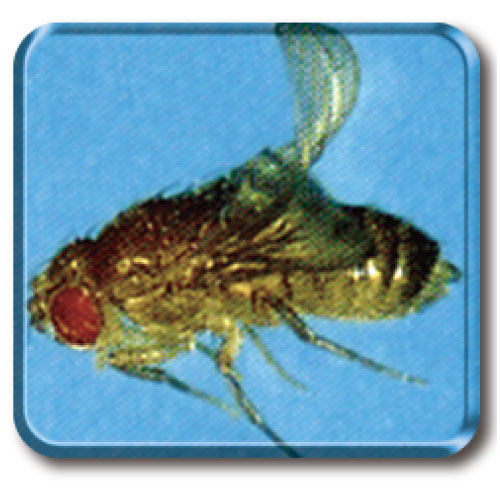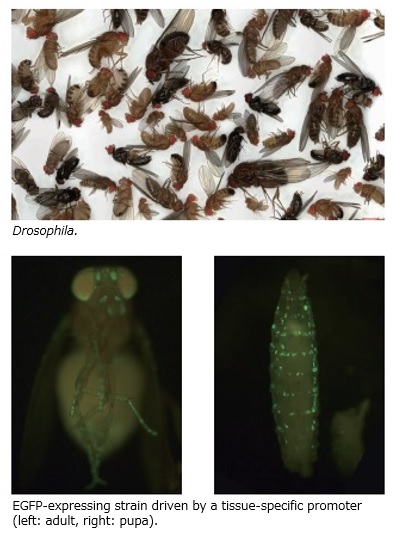

- Core Center:Department of Chromosome Science, National Institute of Genetics
- Principal Investigator:Kuniaki Saito
- FAX:+81-55-981-6825
- Sub-Core Center 1:KYOTO Stock Center, DGRC, Kyoto Institute of Technology
- Sub-Core Center 2:Kyorin University, School of Medicine
概要Overview
 Drosophila is a small insect that is widely used as a model organism in both basic biological research and medical science because it shares 70% or more of its genes with humans. It has a short generation time of only 2 weeks and is easy to cultivate. Moreover, the Drosophila genome has been sequenced and precisely annotated. The last 20 years has seen significant growth and advancement of Drosophila resources, and the pace of advancement is continuing to increase in Japan.
Drosophila is a small insect that is widely used as a model organism in both basic biological research and medical science because it shares 70% or more of its genes with humans. It has a short generation time of only 2 weeks and is easy to cultivate. Moreover, the Drosophila genome has been sequenced and precisely annotated. The last 20 years has seen significant growth and advancement of Drosophila resources, and the pace of advancement is continuing to increase in Japan.
Stock
・RNAi strains: about 14,000 strains
・FlyCas9 strains: about 30 strains
・Basic strains: about 3,700 strains
・NP strains: about 4,200 strains
・Regional wild/mutant strains: about 1,500 strains
Subjects in the NBRP programs related to “Drosophila“
【 Value addition subprogram/ Genome Information Upgrading Program 】
| FY2018 | Sequencing genome-editing strains of Drosophila (in Japanese) |
| FY2015 | Genome sequencing of diverse Drosophila species (II) |
| FY2014 | Genome sequencing of diverse Drosophila species |
| FY2007 | Genome and property information for the quality control of Drosophila strains |
| FY2002-FY2005 | Genome Information Upgrading Program : FY2002-FY2006 |
【 Technology development subprogram/ Fundamental Technology Upgrading Program 】
| FY2022-FY2023 | ショウジョウバエ属における新規ゲノム編集技術と凍結保存技術の整備 (in Japanese) |
| FY2020-FY2021 | Upgrading and verification of cryopreservation methods of Drosophila stocks (in Japanese) |
| FY2017-FY2018 | Development of new technologies for stable maintenance of Drosophila stocks (in Japanese) |
| FY2016 | Development of a new cryopreservation method for Drosophila stocks (in Japanese) |
| FY2012-FY2013 | Development of cryopreservation method of Drosophila strains |
| FY2007-FY2009 | Development of a long-term stable preservation technology for Drosophila strains |
